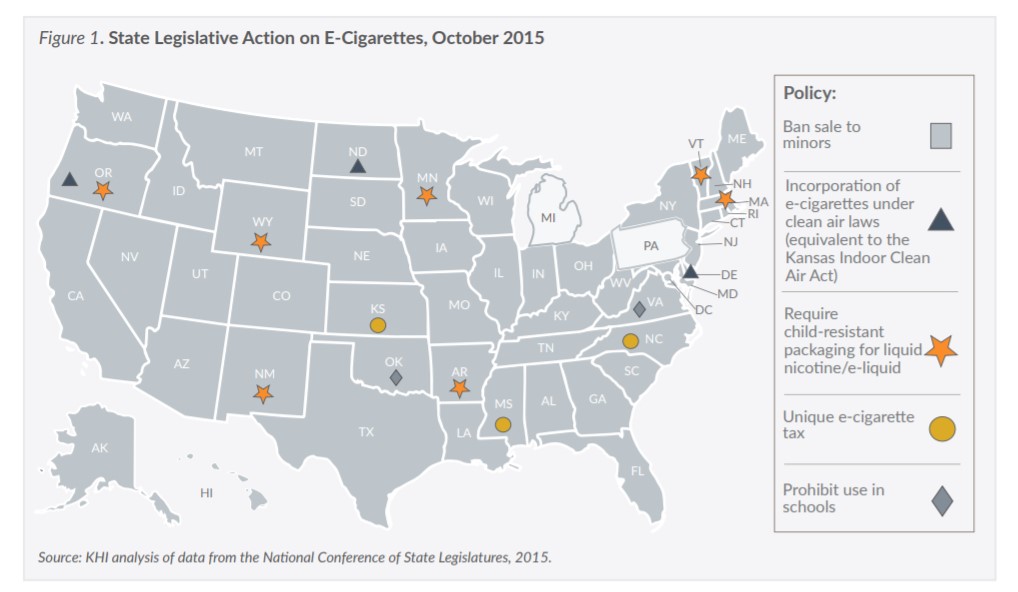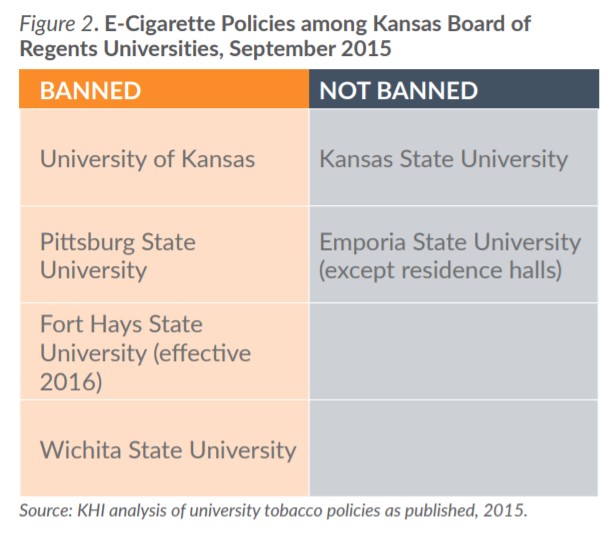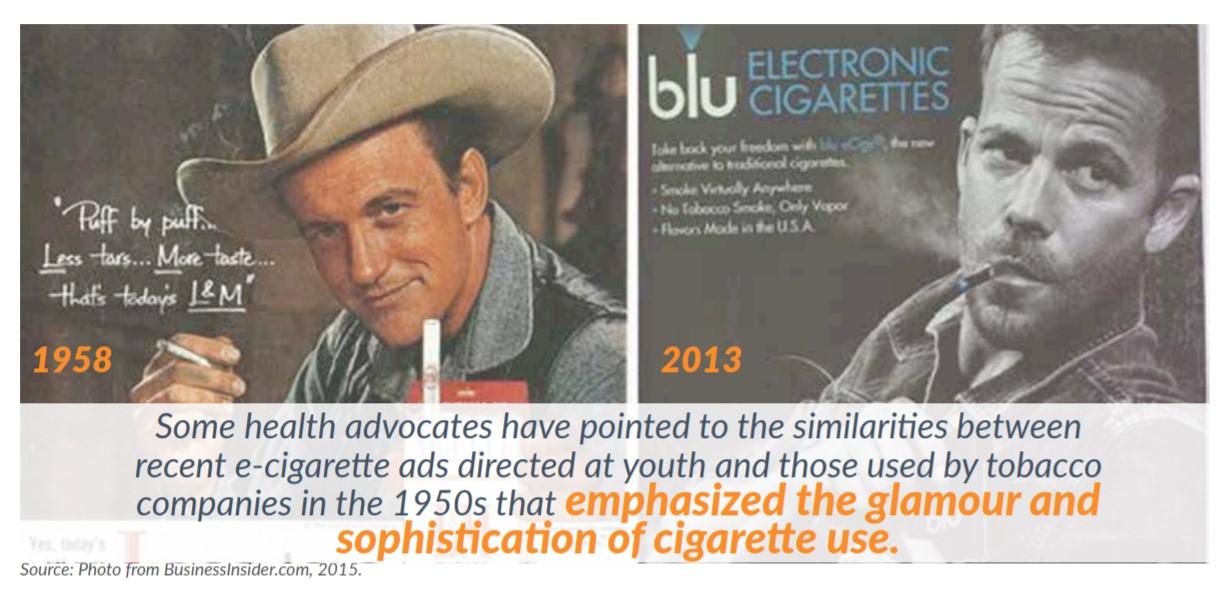Introduction
Many recent reports have shown that the use of electronic cigarettes, commonly known as e-cigarettes, has risen sharply among both adults and youth in the United States. The long-term health effects of e-cigarette use are not known, and regulation at the local, state and federal levels is lagging. This brief is the third and final in a series of three discussing the public health issues related to e-cigarettes in Kansas: (1) E-Cigarettes and Their Use in the U.S. and Kansas; (2) Health Effects of E-Cigarettes; and, (3) E-Cigarette Policy, Regulation and Marketing.
In the absence of national legislation on e-cigarettes, federal agencies, state legislatures and city councils have taken steps to restrict e-cigarette access. This issue brief explores the policy and regulatory options at the federal and state levels that affect e-cigarette sales, use and marketing.
Policy and Regulation
Federal
Though the U.S. Food and Drug Administration (FDA) gained control over the marketing and regulation of most tobacco products in 2009, e-cigarettes are not presently subject to the FDA’s authority. The FDA first proposed regulation of e-cigarettes as drug-delivery products, based on their frequent marketing as smoking cessation devices under the Food, Drug and Cosmetic Act. However, that move was struck down in 2010 by the U.S. Court of Appeals in the District of Columbia.
Since that ruling, the FDA has instead moved towards redefining “tobacco products” under the Family Smoking Prevention and Tobacco Control Act of 2009 to incorporate e-cigarettes and other newer tobacco products. In April 2014, the FDA proposed a rule to regulate e-cigarettes, however, the rule has not been finalized.
What would FDA regulation do?
If the proposed rule is ultimately approved, the FDA will have control over several major aspects of e-cigarette sales, including:
-
- Banning the sale of e-cigarettes to minors;
- Requiring health warning labels on e-cigarette packaging and prohibition on claims of “reduced risk” unless confirmed by FDA;
- Registration of e-cigarette manufacturers;
- Disclosure of all product ingredients, and;
- Prohibition of vending machine sales in facilities that admit youth.
State
In the absence of federal regulation, state legislators have begun to take action on restricting e-cigarette use. According to the National Conference of State Legislatures, a total of 49 states, including the District of Columbia, have banned the sale of e-cigarettes to minors.
In 2012, Kansas state legislators enacted a ban on the sale of e-cigarettes to minors (KSA 79-3321) and outlawed possession of e-cigarettes by minors. During the 2015 session, policymakers, as a part of a larger tax bill, included a sales tax on e-cigarettes at the rate of $0.20/milliliter of e-liquid (HB 2109) beginning July 1, 2016. Previously, e-cigarettes were taxed only at the general sales tax rate. Conventional cigarettes are taxed at $1.29 per pack, making the price point comparable for e-cigarettes containing at least 6.5 mL of fluid.
In 2010, the Kansas Indoor Clean Air Act went into effect, banning smoking in most public places, including restaurants, workplaces and health care facilities. However, in 2011, the Kansas attorney general issued an opinion clarifying that e-cigarettes are not included as a smoking device under the act. Thus, e-cigarettes are still legal for use in most public places in Kansas.



